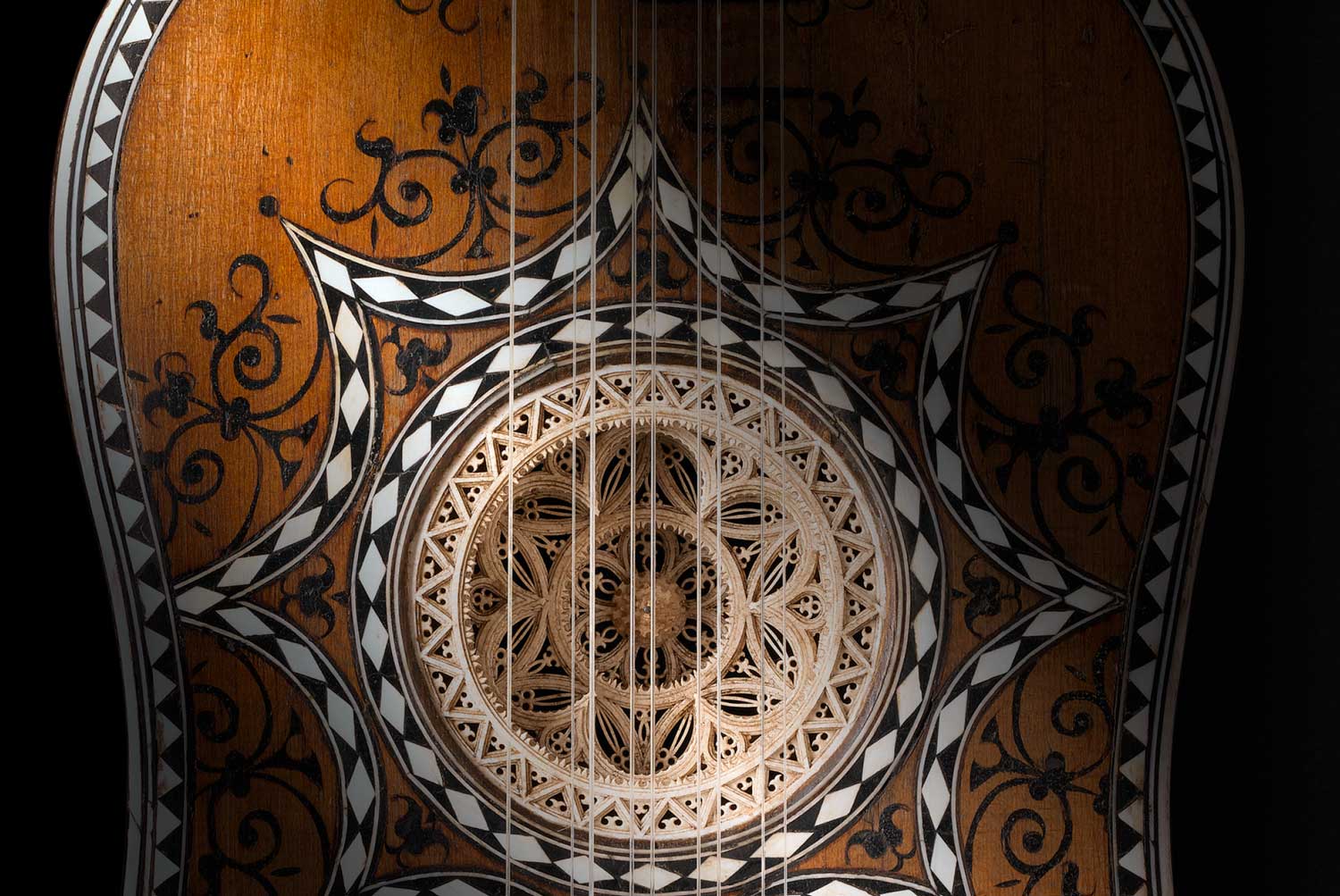The Baroque Rose
Baroque-era guitars of the seventeenth and eighteenth centuries were appointed with a decorative carved ornament or “rose” fitted in the sound hole. This was a tradition that dated back thousands of years evidenced by ancient statuary and reliefs depicting plucked-stringed instruments with ornamented sound holes.
The rose was either carved directly into the soundboard or often inserted from behind, sculpted from wood or parchment. The layered geometric designs trace their history back to the days of the Medieval Arabic oud – an ancestor of the lute.

Re-entrant Tuning
The repertory of the Baroque guitar with its five courses (or paired strings with the first string often single) required a mixture of techniques, including strummed or rasgueado chords, punteado play (the characteristic pizzicato lute technique), and the ringing style of melodic passage work called campanelas. Many different tunings were employed, including the arrangement that positioned the third course as the lowest and the fifth and fourth courses an octave higher than a modern player would expect. Such “re-entrant” tunings, as they are called, allowed the player to combine the re-entrant courses with the higher courses in melodic work. They also gave the Baroque guitar a brighter sound and a predominantly higher tessitura than its modern counterpart.
